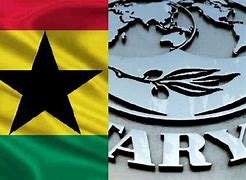Ghana’s stock of public debt went up by GH¢40.2 billion between January and March this year, pushing the debt-to-GDP ratio further into unsustainable levels.
According to latest data from the Bank of Ghana (BoG), gross public debt of the West African economy rose to GH¢391.9 billion at the end of March 2022, up from GH¢351.7 billion in January this year.
Consequently, the addition to the country’s stock of public debt in the first quarter (Q1) of the year, pushed the debt-to-GDP ratio to 78.0% in March 2022, 8 percentage points higher than the 70.0% recorded at the end of the first month of the year.
On a year-on-year basis – between March 2021 and March 2022 – the country’s overall debt stock rose by GH¢87.3 billion. This was because the debt stock was GH¢304.6 billion as of March 2021 and accounted for 66.3% of the country’s Gross Domestic Product (GDP) as at that time. In percentage terms, this means that the country’s debt grew by 28.7% within the period under review.
Meanwhile, due to the strong growth of 5.4% recorded in 2021, the debt-to-GDP ratio at the end of December 2021 was revised to 76.6%, lower than 80.1% earlier reported by the Central Bank.
The debt ratios were computed using the country’s GDP of GH¢459,131 million for 2021 and a projected GDP of GH¢502,430 million for 2022, as per data from the Ghana Statistical Service.
Debt components
In terms of the components, the data showed that majority of the country’s debt is now held by external agents, a major change in the country’s debt component as previous data pointed to the fact that the country’s debt was mostly held by domestic agents.
External debt was GH¢201.9 billion and accounted for 40.2 % of GDP as of March 2022. On the other hand, domestic debt was GH¢189.9 billion which also accounted for 37.8% of GDP at the end of March this year.
In January 2022, domestic debt was GH¢181.9 billion and was higher than the external component of GH¢169.8 billion. The tables however, turned in February when external debt rose to GH¢186.8 billion and accounted for 37.2% of GDP whilst domestic debt also increased to GH¢185.4 billion and accounted for 36.9% of GDP. This trend continued in March even though both components experienced an increase for the second month in a row.
The revision of the trend may be a signal that the country’s debt is now becoming more attractive to foreign investors after it lost access to the capital markets in the last quarter of last year.
Despite this positive development regarding external debt, the rising domestic debt component remains a major concern since the majority of domestic debt is held by the banking sector, something the IMF earlier warned against. This is because of its tendency to crowd out private sector investment as banks’ appetite to hold government securities rise.
Regardless, the overall trend of rising debt remains a major issue that must be addressed through pragmatic measures to increase revenues which only witnessed a marginal increase in Q3 2022, up from 1% of GDP in January 2022 to 3.3% in March.























